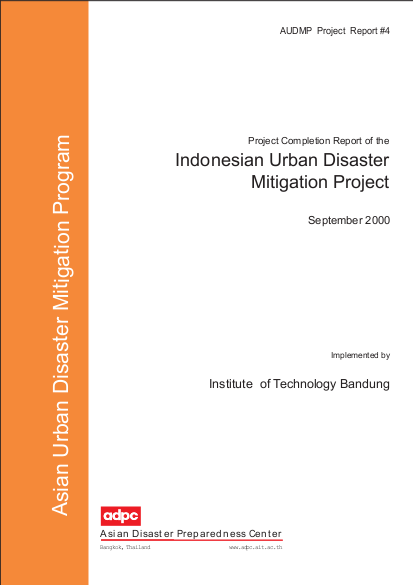
The Indonesian Urban Disaster Mitigation Project was launched in March 1997 under the Asian Urban Disaster Mitigation Program. The objective of the Indonesia national demonstration project is to reduce the vulnerability of the urban population, infrastructure, critical facilities, and shelter in Bandung, West Java to natural disasters, particularly to earthquake hazards. The project, implemented by the Center for Earthquake Engineering Studies (CEES) and Center for Urban and Regional Development Studies (CURDS) within the Institute for Research, Institut Teknologi Bandung (ITB), demonstrated a methodology for seismic risk analysis, mitigation and preparedness. The project assisted municipal officials to develop improved tools and skills in urban planning, improved building regulation, and emergency preparedness. Activities under the demonstration phase of the project included hazard and vulnerability mapping, city spatial plan review, building control monitoring system review, capacity building of local disaster management unit, development of city operational emergency plan, review of the existing national policy on disaster management and mitigation, and networking.
Resource collections
- Accountability to affected populations (AAP)
- ADRRN Knowledge Hub
- ALNAP focus topics
- Evaluating humanitarian action
- Monitoring and Evaluation (M&E)
- Monitoring of humanitarian action
- UN Habitat - Urban Response Collection
- Urban Response - Urban Crisis Preparedness and Risk Reduction
- Urban Response Collection - Community Engagement and Social Cohesion
- Urban Response Collection - Economic Recovery
- Urban Response Collection - Environment and Climate Change
- Urban Response Collection - Housing, Land and Property
- Urban Response Collection - Urban Crisis Response, Recovery and Reconstruction
- Urban Response Collection - Urban Resilience